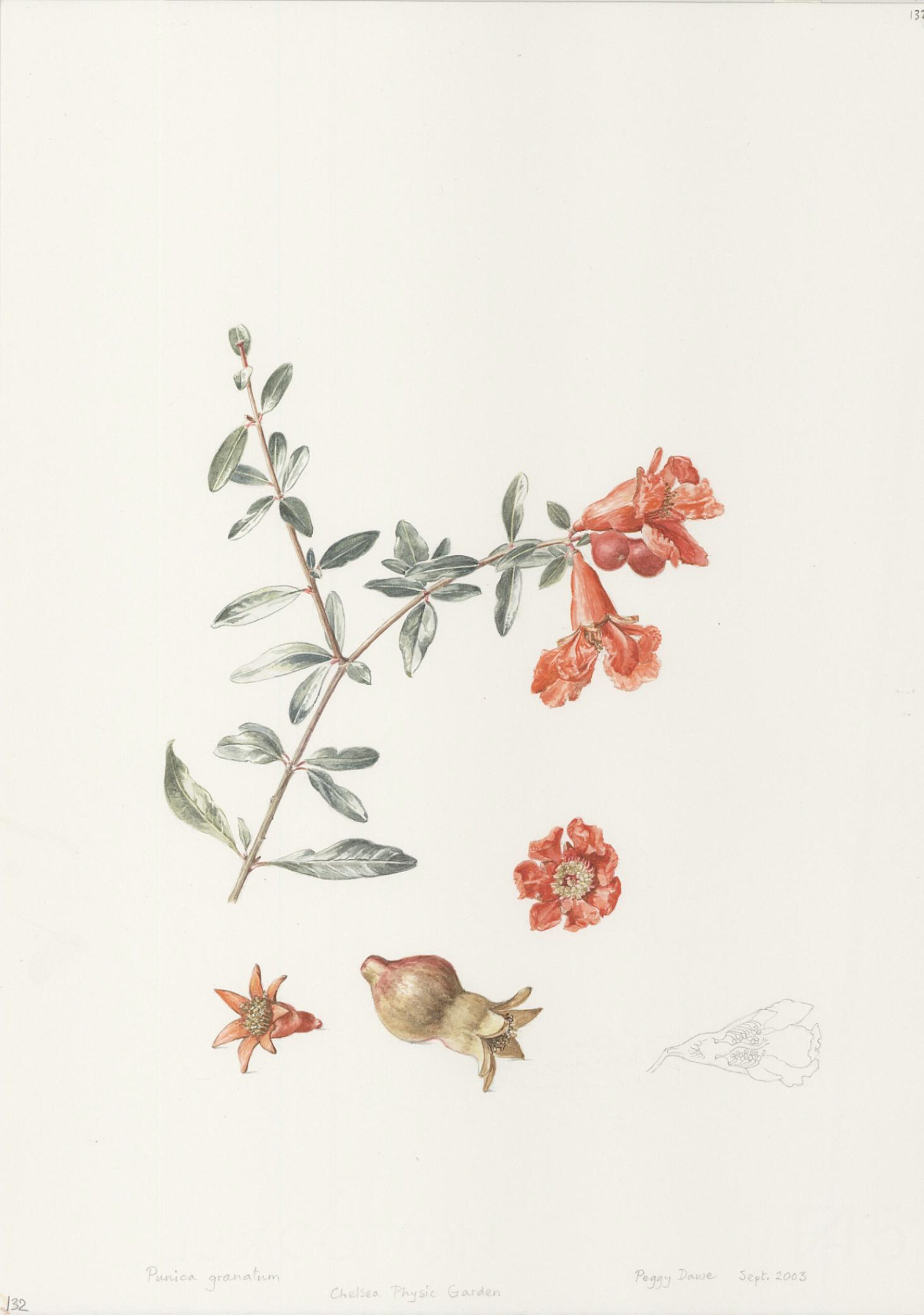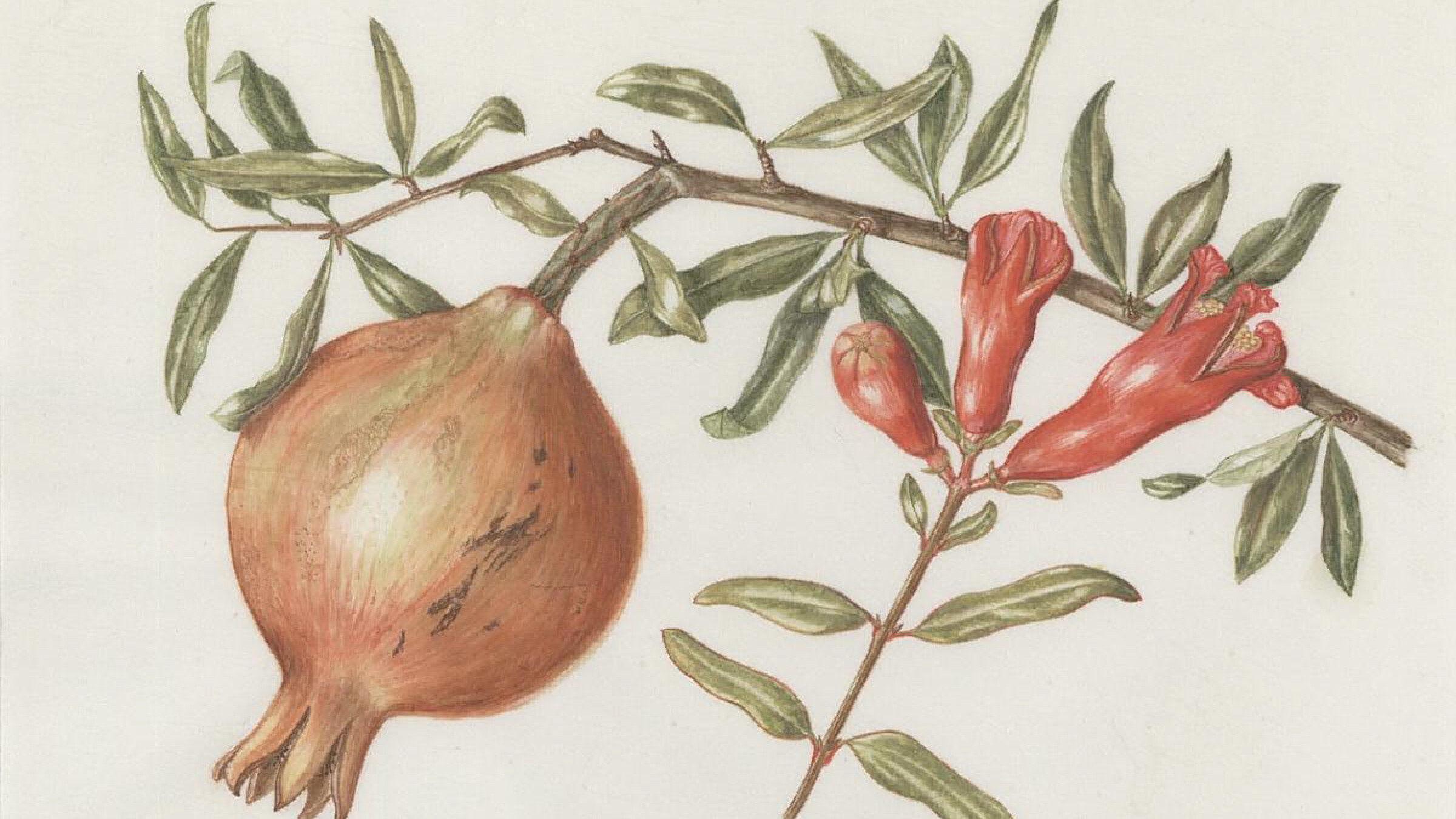Plants of the Winter Solstice
By Eve Barro, Assistant Project Curator at Chelsea Physic Garden
Every month, we will be labelling the plants mentioned in these blogs to bring our stories to life, so keep an eye out for the circular green labels during your next visit. A full list of these plants can be found at the end of the blog.
The celebration of the winter solstice is an important event in many cultures all around the world. In the northern hemisphere, this celebration marks the shortest day and longest night of the year. For many people it is the occasion to give thanks to nature and welcome the return of light. For this month’s post, I selected four plants which are at the core of these mid-December festivities.
Crocus sativus (saffron) – Saint Lucy’s Day (Sweden)
In Sweden (N. Europe), Crocus sativus (saffron) can be found in many festive pastries but is strongly associated with Saint Lucy’s Day celebrations. St Lucy’s Day is often remembered for its candlelit processions. It is celebrated on the 13 December. Before Sweden’s adoption of the Gregorian calendar in the 1700s, the 13 December coincided with the winter solstice (1). In Swedish folklore, the night of the winter solstice is associated with danger and darkness. Saint Lucy of Syracuse is commemorated as a symbol of light and hope. The celebration is accompanied by many traditional Swedish sweet treats . The most famous of all is the “Lussekatter”, a traditional Swedish saffron bun.
Crocus sativus initially originates from Greece, but saffron was introduced into Sweden as a spice many hundreds of years ago (2). In fact, the first recorded mention of the saffron spice in Sweden goes back to the early 1300s. At the time, spices became associated with festive occasions because of their rarity. Saffron would have been only available to wealthy households for many years for that reason. However, from the 1800s onwards, as a result of the economic growth of Sweden and the increased economic resources of Swedish people, the use of saffron spread in the country, allowing the popularisation of Saint Lucy’s Day saffron buns (3).
Punica granatum (pomegranate) – Yaldā night (Iran & Afghanistan)
Punica granatum is an essential part of the Yaldā night, the winter solstice festival celebrated in Iran (W. Asia) and Afghanistan (C. Asia). The Yaldā night takes place during the night of the winter solstice and celebrates the victory of light over darkness. It has been celebrated in Iran for more than 5000 years. In fact, the word “Yaldā” comes from a Cyrillic word meaning “rebirth” (4).
On this night families and communities remain indoors and stay up for as long as possible to welcome the return of light and longer days. They play games and music, read poetry by famous 14th century Persian poet Hafez, and tell stories while snacking on symbolic food such as Punica granatum (pomegranate) (5). For the occasion pomegranates are saved from the summer harvest to commemorate the year’s yield. Pomegranates also have a symbolic relevance. Indeed, in Iran, they are considered a heavenly fruit and a symbol of fertility, goodness and light (4). The symbolic power of pomegranates acts as a counter force against the darkness of the Yaldā night.
Zea mays (corn) – Soyal (Hopi people in Southwestern United States)
Zea mays, in the form of cornmeal and cornhusks, is a crucial element of the Hopi celebration of the winter solstice also known as Soyal. Soyal is a nine-day ceremony held in honour of the Sun and to encourage its return. It is also associated with the return of the katsinam, ancestral spirits who guide the Hopi people and act as messengers between them and the supernatural realm (6). During the ceremony the katsinam dance to promote regeneration and vitality of the Hopi people and the natural world. Many other sacred rituals are performed during the ceremony (7, 8).
Several elements of the celebration, including the preparation of prayer devices and altars involve using cornmeal and cornhusks (8). Zea mays (corn) is a physically, spiritually, and symbolically important part of Hopi life. It is used as a means of subsistence and is part of the preparation of many dishes. It also has a central spiritual significance as it used in various other traditional Hopi rituals and plays important roles in Hopi mythology (9).

Zingiber officinale (ginger) – Dongzhi (China)
Zingiber officinale is not the central element of this winter solstice celebration. However, its spicy aroma is tightly associated with the festivity. Indeed, it is very often used to flavour the sweet broth which accompanies the food traditionally consumed during the celebration of the winter solstice in southern China: Tang Yuan (sweet rice dumplings) (10). The winter solstice in China is referred to as Dongzhi and is one of the most important festivals celebrated there.
During the festivities, families and communities give thanks to their ancestors and meet to prepare and eat food such as Tang Yuan. The festival, inspired by yin and yang philosophy celebrates the return of longer days and the increase in the associated positive energy (11). Tang Yuan are prepared by mixing rice flour and water. They can be filled and coloured before cooking in boiling water. A very popular way to serve Tang Yuan is by adding a ginger syrup prepared with fresh ginger, sugar, and water (10).
Find the plants mentioned in this post during your next visit of the Garden (in the New Year).
Plant 1 : Crocus sativus (saffron)
Plant 2 : Punica granatum (pomegranate)
Plant 3: Zea mays (corn)
Plant 4: Zingiber officinale (ginger)
To know more:
Royal Museums Greenwich. (2023). When is the winter solstice? The shortest day. https://www.rmg.co.uk/stories/topics/when-winter-solstice-shortest-day
Kachina House. (2019). Soyal: December’s hopi winter solstice ceremony. Kachina House’s Blog. https://blog.kachinahouse.com/soyal-decembers-hopi-winter-solstice-ceremony/
UNESCO. (2022). Yaldā/chella. https://ich.unesco.org/en/RL/yald-chella-01877
Choi, S. (2016). Discover december traditions at the met. The Metropolitan Museum of Art. https://www.metmuseum.org/blogs/metkids/2016/december-traditionstraditions
Matheson, L. (2020). An introduction to dongzhi festival. Ricefield Arts. https://ricefield.org.uk/2020/12/an-introduction-to-dongzhi-festival/
References
1- Swedish Institute. (2022). Lucia in sweden. Sweden.Se. https://sweden.se/culture/celebrations/the-lucia-tradition
2- Royal Botanic Gardens Kew. (n.d.). Crocus sativus l. | plants of the world online | kew science. Plants of the World Online. Retrieved 20 April 2023, from http://powo.science.kew.org/taxon/urn:lsid:ipni.org:names:436688-1
3- Edwards, C. (2019). How saffron made its way to Sweden and became a key part of Lucia Day. The Local. https://www.thelocal.se/20191213/adventcalendar-how-saffron-made-its-way-to-sweden-and-became-a-key-part-of-lucia-day,
4- Deravian, N. (2021, December 6). Welcoming brighter days on yalda with pomegranates. The New York Times. https://www.nytimes.com/2021/12/06/dining/yalda-winter-solstice-pomegranate.html
5- UNESCO. (2022). Yaldā/chella. https://ich.unesco.org/en/RL/yald-chella-01877
6- Kachina House. (2019). Soyal: December’s hopi winter solstice ceremony. Kachina House’s Blog. https://blog.kachinahouse.com/soyal-decembers-hopi-winter-solstice-ceremony/
7- Dorsey, G. A., & Voth, H. R. (1901a). The oraibi soyal ceremony. The stanley mccormick hopi expedition. Publications of the Field Columbian Museum. Anthropological Series, 3(1), 2–59. https://www.jstor.org/stable/29782025
8- Tyler, H. A. (1964). Pueblo gods and myth. University of Oklahoma Press.
9- Wall, D., & Masayesva, V. (2004). People of the corn: Teachings in hopi traditional agriculture, spirituality, and sustainability. American Indian Quarterly, 28(3/4), 435–453. https://www.jstor.org/stable/4138926
10- Guo, W. (2022, December 15). Tang Yuan, Chinese glutinous rice balls (汤圆). Red House Spice. https://redhousespice.com/tang-yuan/
11- Matheson, L. (2020). An introduction to dongzhi festival. Ricefield Arts. https://ricefield.org.uk/2020/12/an-introduction-to-dongzhi-festival/

